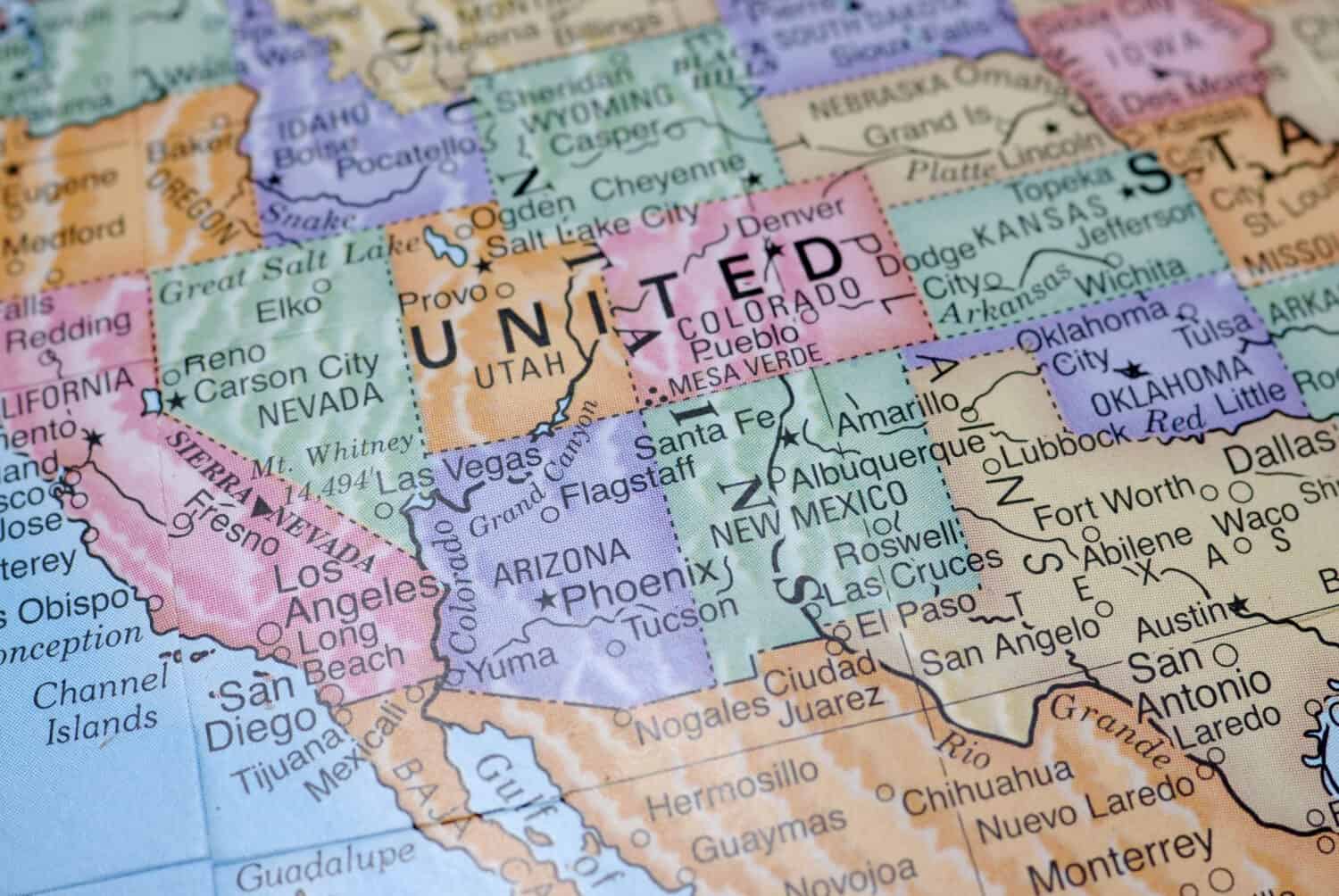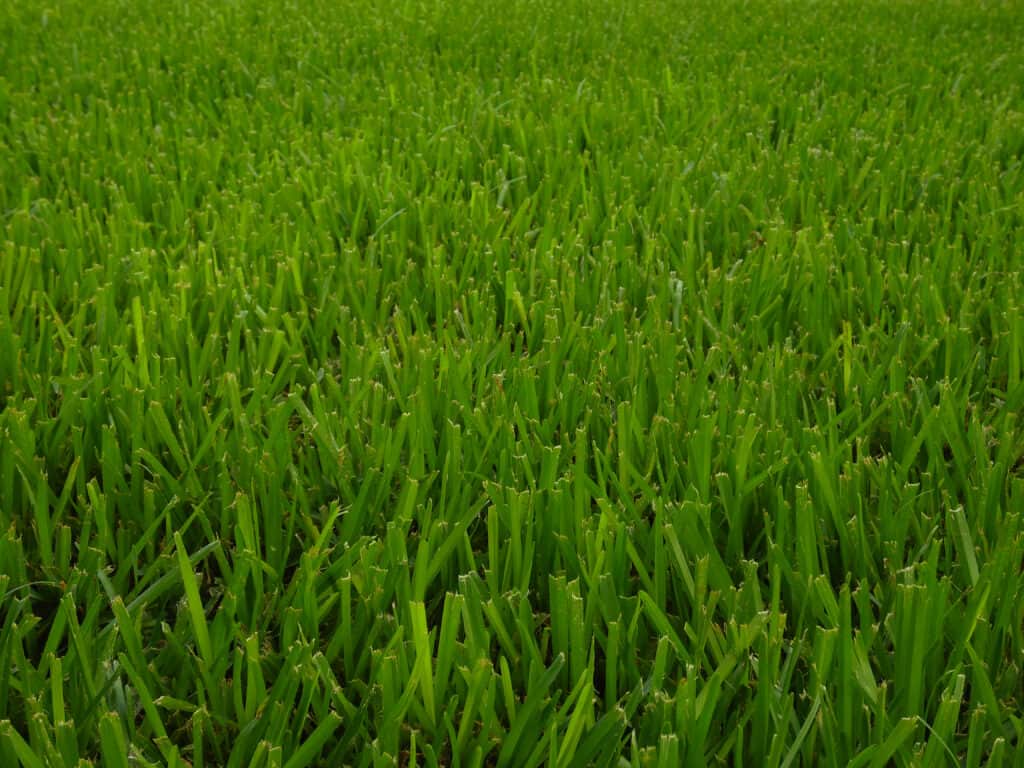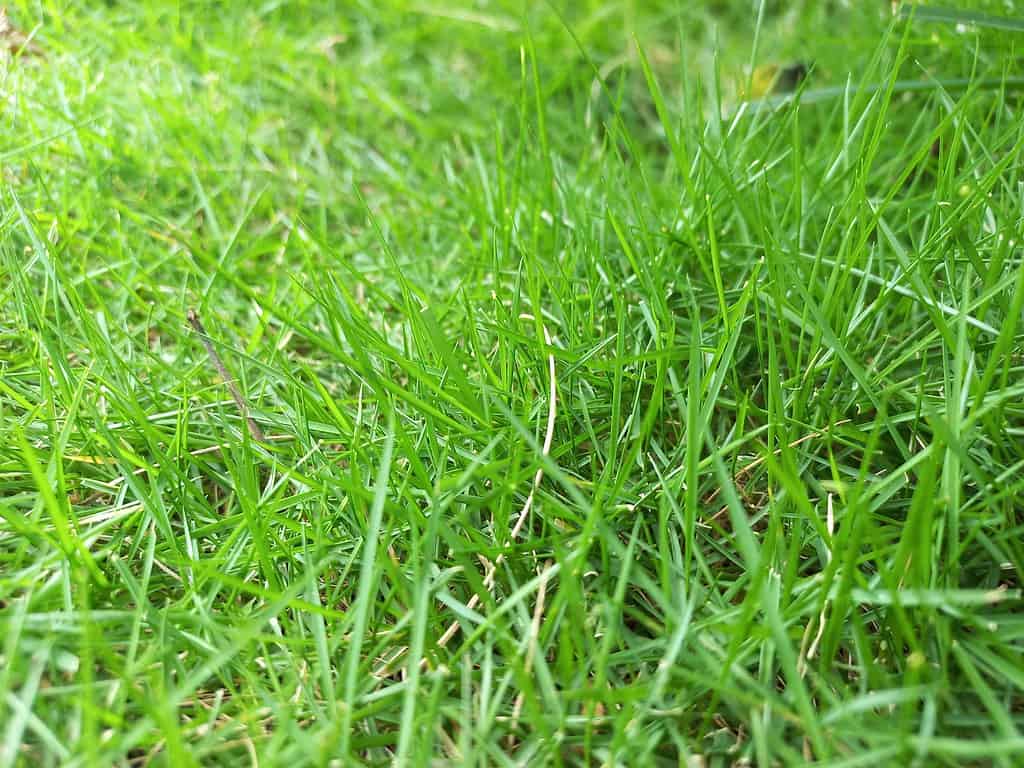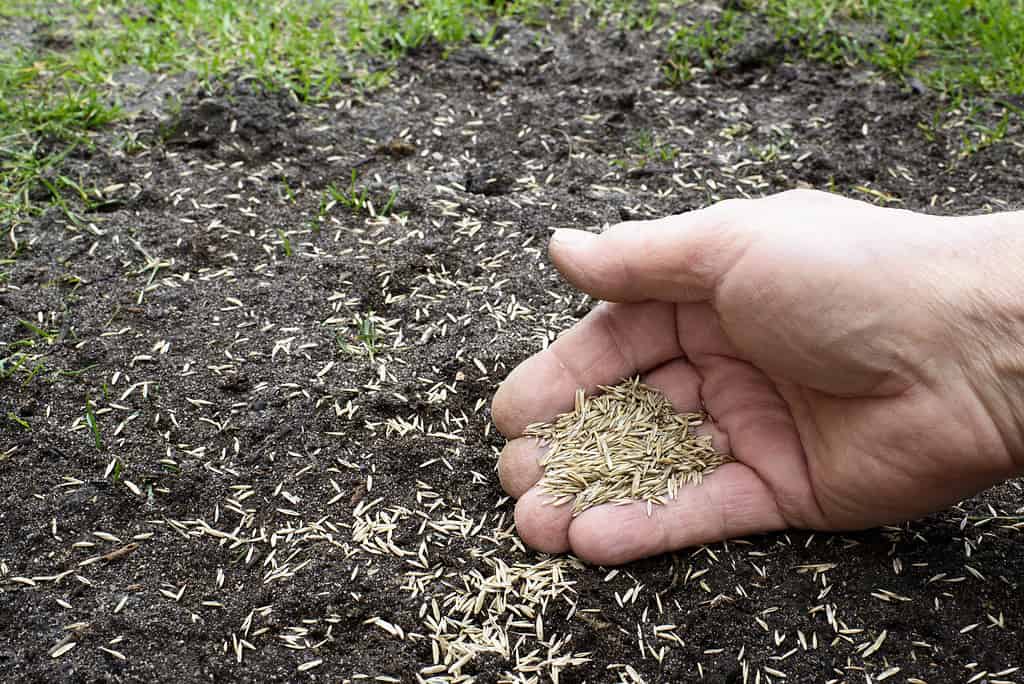In the arid landscapes of the Southwest, where the sun casts its relentless rays and the soil thirsts for rejuvenation, lies the quest for a vibrant and verdant lawn. As homeowners and landscapers strive to transform barren grounds into flourishing oases, one crucial question emerges: When is the best time to plant grass in the Southwest?
Unlocking the secret to successful grass cultivation in this region requires a delicate balance of knowledge and timing. By understanding the unique climatic conditions and considering the specific grass varieties that thrive in the Southwest, one can embark on a journey to create a tapestry of emerald splendor that defies the harsh surroundings.
In this enlightening article, we delve into the depths of the Southwest’s seasons, shedding light on the nuances of grass establishment and growth. So, whether you yearn to transform your backyard into a lush retreat or seek to enhance the curb appeal of your property, join us as we embark on a quest to discover the best time of year to plant grass in the Southwest.
Growing Grass: Understanding the Southwest Climate

The Southwestern U.S. has a distinctive climate, creating opportunities and challenges for grass growth.
©Kent Weakley/Shutterstock.com
Unique Climate Characteristics of the Southwest Region
The Southwest region of the United States is renowned for its distinctive climate, which poses both opportunities and challenges for growing grass. Spanning states such as Arizona, New Mexico, Nevada, and parts of California and Texas, this arid landscape is characterized by scorching summers, mild winters, and limited rainfall. The intense heat of the Southwest can cause soil to dry out quickly and lead to moisture deprivation, while the lack of precipitation makes water a precious resource for grass growth.
Also, the mild winters in the region result in grass growth slowing down and certain varieties going dormant. Understanding these unique climate characteristics is crucial for selecting the right grass varieties and implementing appropriate maintenance practices.
Challenges and Considerations for Grass Growth
Growing grass in the Southwest region comes with its fair share of challenges and considerations. The primary challenge is the intense heat experienced during the summer months. With temperatures often exceeding 100 degrees Fahrenheit, the combination of high heat and low humidity can stress the grass and lead to sunburn on the blades.
Also, the arid climate of the Southwest presents limited rainfall, making water a scarce resource. Choosing grass varieties that are drought-tolerant and have low water requirements is essential for successful growth in these conditions. Moreover, the mild winters in the region can impact grass growth, with some varieties going dormant. Selecting grass types that are suited for the region’s winter conditions ensures a healthy lawn year-round. Overall, navigating these challenges and considering the unique characteristics of the Southwest climate is crucial for achieving a thriving and vibrant lawn in this arid region.
Factors to Consider for Grass Planting in the Southwest

St. Augustine grass is a great grass for the hot temperatures in the southwest region of the United States.
©Xeres Zales/Shutterstock.com
Soil Conditions and Preparation
Before planting grass in the Southwest, it is crucial to assess and prepare the soil properly. The region’s soil is often sandy or clay-based, which can pose challenges for water retention and nutrient availability. Conducting a soil test to determine its pH level and nutrient content is essential. Amending the soil with organic matter, such as compost, can improve its structure and water-holding capacity. Additionally, ensuring proper drainage is crucial to prevent waterlogging, especially in clay soils.
Grass Species Suitable for the Southwest Climate
Choosing the right grass species is vital for successful growth in the Southwest. Warm-season grasses, such as Bermuda grass, Zoysia grass, and St. Augustine grass, are well-suited for the region’s hot and arid climate. These grasses have excellent drought tolerance and can withstand high temperatures. Selecting grass varieties that have low water requirements and are resistant to pests and diseases commonly found in the Southwest is essential for maintaining a healthy and vibrant lawn.
Sun Exposure and Shade Considerations
Understanding the sun exposure and shade conditions in your yard is crucial for selecting the appropriate grass species. Most grasses thrive in full sun, requiring at least six to eight hours of direct sunlight per day. However, if your yard has areas of shade, it is important to choose grass varieties that can tolerate partial shade conditions. Fine fescue and buffalo grass are suitable options for areas with limited sunlight, while Bermuda grass and Zoysia grass perform well in full sun.
Watering and Irrigation Requirements
Watering and irrigation play a crucial role in maintaining a healthy lawn in the Southwest. Due to the limited rainfall in the region, it is important to establish a proper watering schedule and irrigation system. Deep and infrequent watering encourages deeper root growth and helps the grass withstand drought conditions. Installing an efficient irrigation system, such as drip irrigation or a sprinkler system with proper scheduling, can ensure water is delivered effectively to the grassroots while minimizing water waste.
The Best Time to Plant Grass in the Southwest

For warm-season grasses like Zoysia grass, late spring is ideal for planting in the southwest.
©Belajar Ceria/Shutterstock.com
Different Seasons and Their Impact on Grass Growth
The Southwest region experiences distinct seasons that can greatly impact grass growth. Spring is a favorable time for grass planting as temperatures begin to warm up, allowing for faster germination and establishment. Summer, with its scorching heat, can be challenging for newly planted grass due to increased water demands and potential stress. Fall is another optimal season as cooler temperatures and increased rainfall create favorable conditions for root development. Winter, however, poses the greatest challenge as frost and freezing temperatures can damage young grass. Understanding these seasonal variations is crucial for determining the best time to plant grass in the Southwest.
Pros and Cons of Each Season for Grass Planting
Spring offers several advantages for grass planting in the Southwest. The warmer temperatures promote faster growth and establishment, and ample sunlight provides favorable conditions for photosynthesis. However, competition from weeds may pose a challenge during this season.
Summer, with its high temperatures, can stress newly planted grass, requiring diligent watering and maintenance. Fall presents an ideal balance of cooler temperatures, increased rainfall, and reduced weed competition, making it an excellent time for grass planting.
Winter, on the other hand, poses the most significant challenges. Freezing temperatures can damage young grass, and slow growth rates make establishment more difficult. Additionally, limited sunlight and increased moisture can lead to disease and fungal issues.
Recommendations for the Best Time to Plant Grass Based on the Southwest Region
Considering the seasonal variations in the Southwest, the best time to plant grass is generally in the spring or fall. For warm-season grasses like Bermuda grass or Zoysia grass, late spring is ideal as soil temperatures reach 60°F or higher, promoting faster germination and establishment.
For cool-season grasses like Kentucky bluegrass or tall fescue, fall is the best time for planting in the Southwest. The cooler temperatures and increased rainfall during this season provide optimal conditions for root development and establishment.
It is important to note that specific grass species and local climate conditions may vary across the Southwest region. Consulting with local gardening experts or extension offices can provide valuable insights and tailored recommendations for successful grass planting in your specific area.
Tips for Successful Grass Planting in the Southwest

Choosing the right grass seeds is crucial for success in planting grass in the southwest.
©iStock.com/
Proper Grass Seed Selection
Choosing the right grass seed is crucial for successful planting in the Southwest. Consider factors such as climate, sunlight exposure, and intended use. Warm-season grasses like Bermuda grass or Zoysia grass thrive in the Southwest’s hot and arid conditions, while cool-season grasses like Kentucky bluegrass or tall fescue are better suited for higher elevations or shaded areas. Research different grass varieties and consult with local experts to determine the most suitable seed for your specific needs and region.
Preparing the Soil for Optimal Growth
Proper soil preparation sets the foundation for healthy grass growth. Start by removing any existing vegetation, rocks, and debris from the area. Conduct a soil test to assess nutrient levels and pH, making necessary amendments to ensure optimal conditions. Loosen the soil with a rake or tiller to improve drainage and root penetration. Spread a layer of organic matter, such as compost, to enhance soil structure and nutrient retention. Level the area and lightly compact the soil before seeding to ensure good seed-to-soil contact.
Watering and Irrigation Tips
Watering plays a critical role in grass establishment and growth. After planting, water the area thoroughly to ensure the soil is evenly moist while avoiding excessive saturation. For the first few weeks, water the seeded area lightly multiple times a day to keep the soil surface consistently moist. As the grass grows, it gradually reduces the frequency and increases the amount of watering, allowing the roots to penetrate deeper into the soil. Install an efficient irrigation system with proper coverage to ensure consistent watering throughout the growing season.
Maintenance and Care After Planting
Proper maintenance and care are essential for the long-term success of your newly planted grass. Avoid heavy foot traffic and mowing until the grass reaches a height of 3 to 4 inches. Gradually reduce watering frequency but increase the duration to encourage deeper root growth. Regularly monitor for pests, diseases, and weeds, promptly addressing any issues that arise. Fertilize according to the specific grass type and recommended schedule. Regularly mow the grass, keeping it at the recommended height to promote healthy growth and discourage weed competition.
Benefits of Planting Grass at the Right Time
Planting grass at the right time offers several advantages that contribute to the success of your lawn.
Favorable Growing Conditions: Planting grass during the recommended time ensures that the seeds are exposed to optimal growing conditions. The temperature, moisture levels, and sunlight during this period are ideal for germination and establishment.
Faster Germination and Growth: When grass seeds are sown at the right time, they have a higher chance of germinating quickly and establishing a strong root system. This leads to faster growth and a denser, healthier lawn.
Increased Drought Resistance: Grass planted at the right time has a better chance of developing deep root systems, which enhances its ability to withstand drought conditions. This helps your lawn stay green and vibrant even during dry periods.
Weed and Disease Control: Planting grass at the recommended time allows it to establish and develop a dense cover, minimizing the opportunities for weeds to take hold. Additionally, healthy, actively growing grass is more resistant to diseases, reducing the need for chemical treatments.
Potential Challenges and Risks of Planting at the Wrong Time
Planting grass at the wrong time can pose several challenges and risks that may hinder the establishment and growth of your lawn.
Poor Germination and Growth: Planting grass outside of the recommended time can result in poor germination rates and slow growth. Unsuitable temperatures or moisture levels can prevent the seeds from sprouting or developing strong roots, leading to patchy or thin grass coverage.
Increased Weed Competition: Planting grass at the wrong time provides an opportunity for weeds to establish and thrive before the grass can grow and fill in. This can lead to weed-infested lawns that require additional time and effort to control.
Vulnerability to Disease and Pests: Grass planted during unfavorable conditions may be more susceptible to diseases and pest infestations. Weakened grass may not have the resilience to fight off common lawn problems, leading to brown patches and damage.
Water Stress and Irrigation Challenges: Planting grass at the wrong time can result in increased water stress on the lawn. Inadequate rainfall or excessive heat can make it difficult to provide sufficient irrigation, which is crucial during the early stages of grass establishment.
In Conclusion
Timing is the key to a flourishing lawn in the Southwest. By implementing the tips and recommendations discussed in this article, you can create a beautiful and resilient lawn that enhances the aesthetic appeal and value of your property. Start planning your grass planting today and reap the rewards of a thriving lawn tomorrow.
The photo featured at the top of this post is © PrivinSathy/Shutterstock.com
Thank you for reading! Have some feedback for us? Contact the AZ Animals editorial team.







